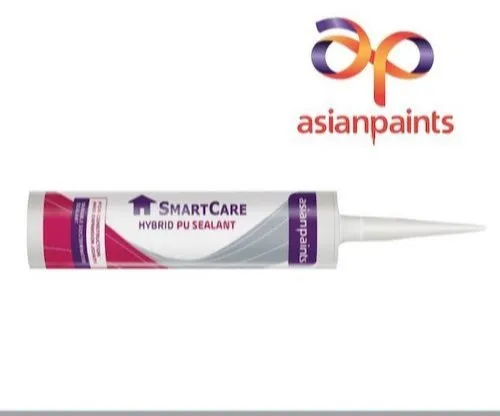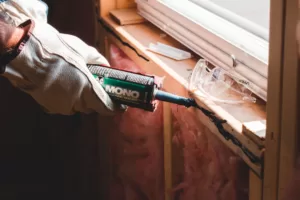polyurthane sealant (PU sealant)
Description:
Polyurethane sealant (PU sealant) is a type of adhesive sealant that is used to seal gaps and joints in various construction projects. It is a versatile sealant that can be used for a wide range of applications, including sealing windows, doors, and other openings in buildings, as well as in automotive and marine applications.
Polyurethane sealant (PU sealant) is made by combining polyurethane polymers with a curing agent, which causes the sealant to harden and form a strong, durable bond. The resulting sealant is resistant to water, chemicals, and weathering, making it ideal for outdoor applications.
Polyurethane sealant (PU sealant) is available in a range of colors to match the surrounding materials. It can be applied using a caulking gun or other dispensing tool, and can be tooled and smoothed to achieve a professional finish.


Polyurethane sealant (PU sealant) offers several advantages over other types of sealants. Some of the main advantages of PU sealant include:
- Flexibility: PU sealant remains flexible after curing, which allows it to expand and contract with changes in temperature and movement in the substrate. This flexibility helps prevent cracking and splitting of the sealant, which can lead to water infiltration and other problems.
- Adhesion: PU sealant has excellent adhesion to a wide range of substrates, including wood, metal, plastic, and concrete. This strong adhesion helps ensure a long-lasting bond and provides an effective barrier against water and air infiltration.
- Durability: PU sealant is resistant to weathering, UV radiation, and other environmental factors, which helps ensure long-term durability and performance. This makes it an ideal choice for outdoor applications where exposure to the elements is a concern.
- Chemical resistance: PU sealant is resistant to a wide range of chemicals, including solvents, acids, and bases. This makes it ideal for use in industrial applications where exposure to harsh chemicals is a concern.
- Paintability: PU sealant can be painted over once it has cured, allowing it to blend in seamlessly with surrounding materials. This makes it an ideal choice for applications where appearance is important.
While polyurethane sealant (PU sealant) offers several advantages, there are also some potential disadvantages to consider:
- Cost: PU sealant is generally more expensive than other types of sealants, such as silicone or acrylic sealants. This higher cost may make it less attractive for some applications, particularly for small projects.
- Odor: PU sealant can have a strong odor during application and curing, which may be unpleasant for some people. Proper ventilation should be used when applying PU sealant to minimize exposure to the odor.
- Cure time: PU sealant can take longer to cure than other types of sealants, particularly in colder temperatures. This longer cure time may delay the completion of a project.
- Application difficulty: PU sealant requires proper application techniques to ensure a strong and effective bond. Improper application can result in reduced adhesion and a weaker bond.
- Discoloration: PU sealant may yellow over time when exposed to sunlight, particularly if it is not painted over. This discoloration may be noticeable on light-colored substrates.


Polyurethane sealant (PU sealant) has a wide range of uses across various industries and applications. Some of the most common uses of PU sealant include:
- Construction: PU sealant is widely used in the construction industry to seal gaps and joints in buildings, such as around windows, doors, and rooflines. It is also used to seal joints in concrete and masonry structures.
- Automotive: PU sealant is used in the automotive industry to seal joints and gaps in car bodies, such as around windows, doors, and trunks. It is also used to seal joints in engine compartments and other automotive parts.
- Marine: PU sealant is used in the marine industry to seal joints and gaps in boats and other watercraft, such as around hatches, windows, and decks.
- Aerospace: PU sealant is used in the aerospace industry to seal joints and gaps in aircraft, such as around windows, doors, and hatches.
- Industrial: PU sealant is used in a variety of industrial applications, such as sealing joints and gaps in manufacturing equipment and machinery.
- DIY projects: PU sealant is also commonly used in DIY projects for sealing gaps and joints around the home, such as around bathtubs, sinks, and baseboards.
Application instructions for polyurethane sealant (PU sealant)
The specific application instructions for polyurethane sealant (PU sealant) may vary depending on the manufacturer and the particular product being used. However, in general, the following steps should be followed when applying PU sealant:
- Surface preparation: Before applying PU sealant, the surface should be clean, dry, and free of dirt, dust, oil, and other contaminants. Any old sealant or adhesive should be removed, and the surface should be sanded or roughened if necessary to improve adhesion.
- Sealant application: PU sealant can be applied using a caulking gun or other dispensing tool. The sealant should be applied in a continuous bead, filling the gap or joint completely. The sealant should be tooled or smoothed to achieve a professional finish.
- Curing: PU sealant typically takes several hours to cure, although the specific cure time will depend on the product and the environmental conditions. The sealant should not be disturbed during the curing process.
- Paintability: Once the sealant has cured, it can be painted over if desired. The sealant should be completely dry and free of any contaminants before painting.
It is important to read and follow the manufacturer’s instructions for the specific product being used, as different products may have different application instructions and cure times. Additionally, proper ventilation should be used during application to minimize exposure to any fumes or odors.
GEOLIZ WATERPROOFERS PVT. LTD.
Waterproofing Products & Services Guide
For details on other waterproofing products & Services
